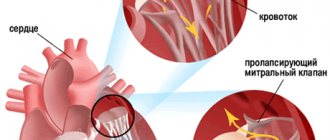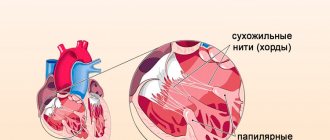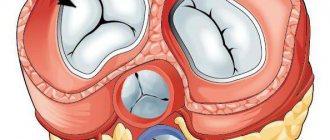In one of the previous articles we already mentioned the power of a number. Today we will try to navigate the process of finding its meaning. Scientifically speaking, we will figure out how to raise to a power correctly. We will figure out how this process is carried out, and at the same time we will touch on all possible exponents: natural, irrational, rational, integer.
So, let's take a closer look at the solutions to the examples and find out what it means:
- Definition of the concept.
- Raising to negative art.
- A whole indicator.
- Raising a number to an irrational power.
Raising to a negative power
The minus degree means that the number is multiplied by itself the same number of times as it appears in the century, and after that the unit is divided by the calculated result.
For clarity, you should pay attention to the following chain of expressions:
110=0.1=1* 10 minus 1 tbsp.,
1100=0.01=1*10 in minus 2 degrees,
11000=0.0001=1*10 in minus 3 st.,
110000=0.00001=1*10 to minus 4 degrees.
Thanks to these examples, you can clearly see the ability to instantly calculate 10 to any minus power. For this purpose, it is enough to simply shift the decimal component:
- 10 to the -1 degree - there is 1 zero before one;
- in -3 - three zeros before one;
- in -9 there are 9 zeros and so on.
It is also easy to understand from this diagram how much 10 minus 5 tbsp will be. —
1100000=0,000001=(1*10)-5.
Symptoms
MVP of the 1st degree with regurgitation of the 1st degree is accompanied by a group of manifestations of neurogenic, cardiac, and respiratory origin. The clinical picture varies depending on the amount of blood coming back. At an early stage, there are many signs, but they are subtle.
- Chest pain. Low intensity. The discomfort lasts from a couple of seconds to 10-20 minutes in extremely rare cases. An unpleasant sensation may indicate coronary insufficiency or be a consequence of abnormalities in the formation of the mitral valve. It is impossible to determine the cause straight away; diagnostics are required.
- Dyspnea. At the first stage, when the volume of violations is minimal, there is practically no discomfort. In order for problems of this kind to begin, intense physical activity is needed. Usually it requires running about a kilometer, climbing to the 4th-5th floor on foot, and carrying significant weight. The duration of the symptom is about 3-10 minutes. After stopping intense activity, everything returns to normal.
- Heart rhythm disturbances. Usually of the type of tachycardia. Mitral insufficiency of the 1st degree does not cause significant deviations such as fibrillation or extrasystole. Therefore there is no danger as such.
- Excessive sweating or hyperhidrosis. Found at night or after prolonged physical activity. The symptom accompanies the patient for the subsequent period. Correction of mitral valve prolapse does not lead to a total cure, but the symptoms are partially smoothed out and health improves.
- Paleness of the skin. The patient becomes like a wax figure. Vessels are visible through the thickness of the marble dermal layer.
- Cyanosis of the nasolabial triangle. Blue discoloration of the area around the mouth. Especially at times of increased physical activity. Then everything fades away.
- Dizziness. Vertigo can make it impossible to orientate yourself normally in space.
- Cephalgia. The pain is localized in the back of the head, parietal region. Caused by a drop in blood pressure. In most cases there are no dangerous consequences.
- Rarely, fainting is possible.
The clinical picture is not accompanied by severe symptoms until the disease progresses to stages 2-3. In some situations there may be no manifestations at all.
The volume of regurgitation is assessed, not the degree of leaflet deflection. This is the main criterion for the severity of the current pathological process. Read more about regurgitation in this article.
How to raise a number to a natural power
Remembering the definition, we take into account that the natural number a in Art. n equals the product of n factors, each of which equals a. Let's illustrate: (a*a*...a)n, where n is the number of numbers that are multiplied. Accordingly, in order to raise a to n, it is necessary to calculate the product of the following form: a*a*…a divided by n times.
From here it becomes obvious that raising to natural Art. relies on the ability to multiply (this material is covered in the section on multiplying real numbers). Let's look at the problem:
Raise -2 to the 4th st.
Solution:
We are dealing with a natural indicator. Accordingly, the course of the decision will be as follows: (-2) in Art. 4 = (-2)*(-2)*(-2)*(-2). Now all that remains is to multiply the integers: (-2)*(-2)*(-2)*(-2). We get 16.
Answer to the problem:
(-2) in Art. 4=16.
Example:
Calculate the value: three point two sevenths squared.
Solution:
This example is equal to the following product: three point two sevenths multiplied by three point two sevenths. Recalling how mixed numbers are multiplied, we complete the construction:
- 3 point 2 sevenths multiplied by themselves;
- equals 23 sevenths multiplied by 23 sevenths;
- equals 529 forty-ninths;
- we reduce and we get 10 thirty-nine forty-ninths.
Answer: 10 39/49
Treatment of arterial hypertension 1 degree
Treatment of stage 1 hypertension based on the patient’s complaints and diagnostic results will be carried out according to an individual plan. Most often, patients with this disease do not need hospitalization - it can be easily managed at home.
In the absence of risk factors or their insignificant number, patients with initial arterial hypertension usually do not require drug treatment.
Non-drug treatment of stage 1 arterial hypertension
The principle of treatment for patients with hypertension is lifestyle changes, which imply compliance with the following recommendations:
- weight adjustment, if necessary, taking measures to lose weight;
- rejection of bad habits;
- regular moderate physical activity: light jogging, walking, physical therapy;
- limiting salt intake to 5 g/day;
- reducing fatty foods in the diet and increasing plant foods;
- periodic consumption of foods containing calcium (dairy products), potassium and magnesium (vegetables, dried fruits, grains);
- avoidance of mental and emotional stress.
In addition, for the treatment of first-degree hypertension when it occurs due to nervousness and stress, psychotherapy and relaxation, reflexology, some types of massage are effective, it is possible to take dietary supplements and medications containing herbal remedies - hawthorn, motherwort, etc.
Tablets for such patients are prescribed only if high blood pressure levels persist for a long time.
Raising to an irrational power
Regarding the issue of raising to an irrational exponent, it should be noted that calculations begin to be carried out after the completion of preliminary rounding of the basis of the degree to any digit that would allow obtaining the value with a given accuracy. For example, we need to square the number P (pi).
We start by rounding P to hundredths and get:
P squared = (3.14)2=9.8596. However, if we reduce P to ten thousandths, we get P = 3.14159. Then squaring gives a completely different number: 9.8695877281.
It should be noted here that in many problems there is no need to raise irrational numbers to powers. As a rule, the answer is entered either in the form of the actual degree, for example, the root of 6 to the power of 3, or, if the expression allows, its transformation is carried out: root of 5 to 7 degrees = 125 root of 5.
Medicines for the treatment of MVP
Peony extract
To achieve a noticeable therapeutic effect, you need to take 30 drops of the extract per 100 ml of water or in its pure form. The drug is taken three times a day for one month. After this, if necessary, you can repeat the course of treatment, but be sure to take a break for 10-15 days. It is worth considering that the drug significantly enhances the effect of antispasmodics. When using Peony extract simultaneously, the dosage of antispasmodic drugs should be slightly reduced. You should not take two sedatives at the same time.
Valerian officinalis
The herbal preparation can be taken at any age after a slight dose adjustment, if there is no individual intolerance to the components of the drug. Typically, adults and children over 12 years of age are prescribed 2-4 tablets immediately after the main meal. The number of daily doses may vary depending on the patient's condition. Usually their number cannot exceed four. The duration of therapy is one month; if necessary, the course can be shortened or increased.
Valerian officinalis can be taken at any age with a slight dose adjustment
Nebivolol
The drug is especially indicated for men, since it has absolutely no effect on impotence and does not reduce erectile function. Usually the patient is prescribed 2.5-5 mg of the active substance once a day. It is better to take the drug in the morning after breakfast, when its absorption is greatest and gastric juice will not corrode the active substance. The real result from using Nebivolol will be noticeable after 7-14 days of treatment. Patients over 65 years of age should not take a dose exceeding 2.5 mg of the active substance. The duration of treatment depends on its success and is determined by the attending physician.
Nebivolol for the treatment of grade 1 anterior leaflet mitral valve prolapse
Panangin
The drug can quickly restore the deficiency of potassium and magnesium in the patient’s body, which will significantly improve his condition and improve the functioning of the heart. You need to take 1-2 tablets three times a day. If necessary, the dose can be increased to a maximum of three tablets three times a day.
The duration of the course and its repetition can be determined only after additional examination, taking into account the success of the therapy. In old age, dose adjustment may be necessary, especially when the patient has problems with the kidneys and liver.
Fenilin
The drug should not be prescribed to patients with obvious problems with the kidneys and liver, as well as in the presence of any bleeding. After childbirth, the drug can be prescribed only after 10 days if the risk of rebleeding is minimal. Treatment with Phenilin should be carried out under the direct supervision of the attending physician, since the drug has a number of serious contraindications.
During the initial course of therapy, it is recommended to prescribe 0.12 g of the active substance three times a day. Already on the second day, the dose is reduced to 0.9 g, and a day later to 0.3 g. After this, the doctor is required to do an analysis to determine the amount of prothrombin; if its level is within 70%, the treatment ends.
The drug Phenilin is prohibited from taking by patients with obvious problems with the kidneys and liver
Attention! Here are the classic dosages of medications that do not take into account the patient’s full medical history. In the presence of allergic reactions and problems with internal organs, the number of doses may vary significantly.
How to raise a number to an integer power
This algebraic manipulation is appropriate to take into account for the following cases:
- for integers;
- for a zero indicator;
- for a positive integer exponent.
Since almost all positive integers coincide with the mass of natural numbers, setting to a positive integer power is the same process as setting in Art. natural. We described this process in the previous paragraph.
Now let's talk about calculating st. null. We have already found out above that the zero power of the number a can be determined for any non-zero a (real), while a in Art. 0 will equal 1.
Accordingly, raising any real number to the zero st. will give one.
For example, 10 in st. 0=1, (-3.65)0=1, and 0 in st. 0 cannot be determined.
In order to complete raising to an integer power, it remains to decide on the options for negative integer values. We remember that Art. from a with an integer exponent -z will be defined as a fraction. The denominator of the fraction is st. with a positive integer value, the value of which we have already learned to find. Now all that remains is to consider an example of construction.
Example:
Calculate the value of the number 2 cubed with a negative integer exponent.
Solution process:
According to the definition of a degree with a negative exponent, we denote: two minus 3 degrees. equals one to two to the third power.
The denominator is calculated simply: two cubed;
3 = 2*2*2=8.
Answer: two to the minus 3rd art. = one eighth.
Causes of pathology
The causes of the development of the defect are congenital and acquired.
Congenital causes
Anomalies in the development of connective tissue (Marfan and Ehlers-Danlos syndromes). This situation is genetically determined.
There are familial cases of pathology. In such families, all related members have this diagnosis confirmed.
Acquired reasons
| Causes of mitral valve prolapse | How common is it among all mitral valve pathologies? |
| Rheumatic mitral valve defects | 50–80% |
| For arterial hypertension and thickening of the myocardial wall of the left ventricle | 8–12% |
| Infectious endocarditis – damage to the valve apparatus by an infectious process (colonies of bacteria) | 10% |
| Severance of the chord as a consequence of blunt trauma to the chest and prolapse of the valve into the left atrium | No more than 2–3% |
| Prolapse and regurgitation due to avulsion of the leaflet chord during myocardial infarction | No more than 2–3% |
The most common cause of mitral prolapse is rheumatic defects. Rheumatism is an autoimmune pathology that leads to a change in the appearance of the valves and the development of prolapse and (or) stenosis - narrowing of the mitral valve opening.
In rheumatism, they speak of a combined mitral valve defect, in which regurgitation (backflow of blood into the atrium) can prevail over stenosis.
What to do if there is a sharp jump in blood pressure
A sharp increase in blood pressure is fraught with such deadly consequences as heart attack, stroke, and hypertensive crisis. Therefore, during an exacerbation of stage 1 hypertension, it is important to promptly provide the patient with competent first aid:
- reduce pressure gradually, by no more than 25% within 2 hours;
- stabilize blood pressure readings for 1-2 days.
For these purposes, medications such as Prazoin, Captopril, Nifedipine, Propranolol, Clonidine are used. Medicines are taken according to the instructions provided.
If drug therapy does not give the desired result and the patient’s blood pressure remains elevated, it is necessary to call an ambulance!
Stage 1 hypertension responds well to therapeutic correction and prevention. The most important thing is to be attentive to your health and strictly follow medical recommendations. In this case, there is a high probability of complete recovery. If the disease is not treated, stage 1 arterial hypertension will progress, which will lead to a deterioration in the general condition, a decrease in the quality of life and will require constant use of medications.









